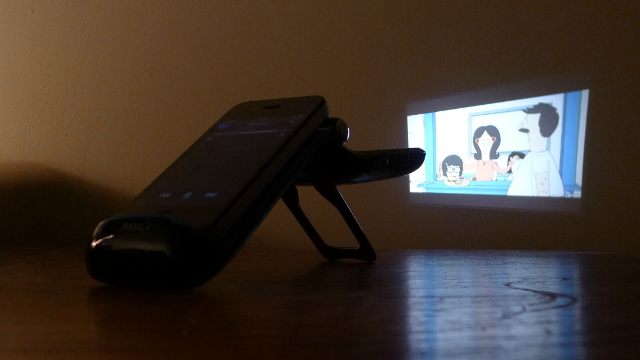Now that many millions of people have multiple computing devices — laptops, tablets, smartphones — it can be a real pain to make sure you have the document or file you need on the device you’re using at any one time. And if you’re trying to share those documents to collaborate on a project, emailing can quickly become confusing, especially if they are frequently edited or annotated.
A number of services are battling it out to act as trusted online repositories for important documents that can be accessed on all your computers and devices, and shared with others. Some even go beyond file storage to include built-in editing and collaboration tools that live on remote servers instead of on devices. In Silicon Valley, this is considered one form of the big trend called cloud computing.
For some time I've been testing some of the leading online file storage and sharing services. I didn’t try to pick a winner, since they all worked fine for me. And I didn’t do an in-depth review of them. Instead, my aim here is just to explain the category and highlight some of the key competitors. I compared their main features and costs.
Overall, this type of service is useful for anyone with many computers and devices, either for personal or group use.
I chose to look at four of the best-known services aimed primarily at consumers: Dropbox, SugarSync, Microsoft SkyDrive and Google Drive.
Most of these services work in basically the same way. They establish a special folder on your computer and install a small program to monitor that folder. Any file you place in that folder is synchronized with a similar special folder on any other computer where you’ve installed the program, as well as with a virtual hard disk stored on a remote server that’s accessible via a Web browser or a mobile app.
If a file saved to the special folder is changed in one place, that change is replicated everywhere else. So the files are both backed up in multiple places and synced. All the services work on both Windows and Mac and on both Apple and Android-powered mobile devices. Each offers a teaser amount of free storage online for these files and then charges for storing more, at various amounts. For simplicity, I compared their annual fees for a 100-gigabyte account, more than enough for most average folks.
Each of the contenders claims to be secure and requires a password, but, like everything on the Internet, there is no way to be absolutely certain their security is impregnable.
Dropbox
This service from a small company, Dropbox Inc., is the best known, and simplest, of the bunch. It also claims to be the most popular. You can share individual files via links you can email or post online that will bring up the file in a browser. You also can create shared folders to which you can give access to others. Dropbox also can be set to automatically import photos from cameras or smartphones. But it has the stingiest free-storage offer — just 2 gigabytes — and is relatively costly, charging $99 for a 100-gigabytes plan.
SugarSync
Also from a small company, SugarSync Inc., and well-established, this service has a feature called Magic Briefcase that is similar to Dropbox. But its big advantage is that it doesn’t require this special folder. Instead, it can synchronize and back up online your existing folder structure, so you don’t have to remember to place important files in the special folder.
For instance, it can keep your pictures folders on a Windows and Mac computer in sync, and make the photos available online or through a mobile app. It also allows you to share files with others. But linking all these folders can be complicated, which is why SugarSync is preparing a radical overhaul to simplify the process. It is also the costliest of the services I compared. While it offers 5 gigabytes free, a 100-gigabyte account costs $150 a year.
SkyDrive
Microsoft’s contender offers the most free storage of this group — 7 gigabytes — and the lowest price for 100 gigabytes, just $50 a year. This month, it will roll out a revamped user interface and a companion Android app similar to its existing Apple mobile app. But its biggest advantage is that it is deeply integrated with the world’s most popular document-creation tool, Microsoft Office, on both Windows and Mac. It features a stripped-down, but capable, online version of Office that works in any browser. And any file you store on SkyDrive can be edited in your computer’s local copy of Office, if it’s a recent version, at the push of a button. You can also save files directly to SkyDrive from Office on your computer.
Google Drive
This relatively new service wraps storage and synchronization around Google’s online productivity suite, Google Docs. So, like SkyDrive, it features built-in editing and collaboration, though it can’t directly edit Microsoft Office files, which must first be converted to Google’s formats. It also offers numerous third-party apps, like one for drawing diagrams. The service offers 5 gigabytes free, and charges just $60 a year for 100 gigabytes — almost as little as SkyDrive.
Again, all of these services worked for me. But you might prefer, say, SkyDrive, for its bigger free storage, and tie-in to Microsoft Office; or SugarSync, for its ability to work with your existing folders. You can try several before deciding. It costs nothing to give them a test drive.
We are
TURNkey IT, a firm that believes that you should have all the bells and whistles that the big boys have. Call us at 866-928-8208 or email us at
info@turnkey.pro to see what the fuss is about.



![Olloclip Is The Only iPhone Lens You’ll Ever Need [Review]](http://cultofmac.cultofmaccom.netdna-cdn.com/wp-content/uploads/2012/11/1354285830.jpg)
![Olloclip Is The Only iPhone Lens You’ll Ever Need [Review]](http://cultofmac.cultofmaccom.netdna-cdn.com/wp-content/uploads/2012/11/wpid-Photo-30112012-1507.jpg)
![Olloclip Is The Only iPhone Lens You’ll Ever Need [Review]](http://cultofmac.cultofmaccom.netdna-cdn.com/wp-content/uploads/2012/11/wpid-Photo-30112012-1510.jpg)








